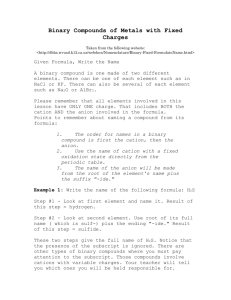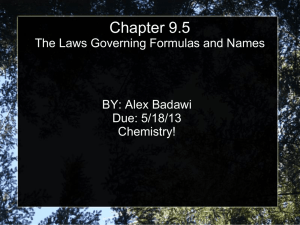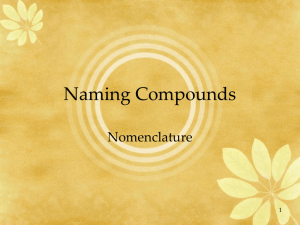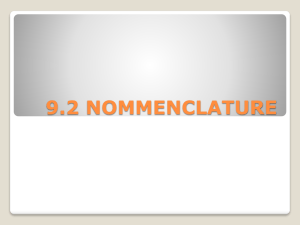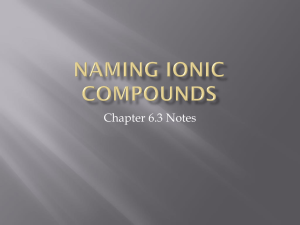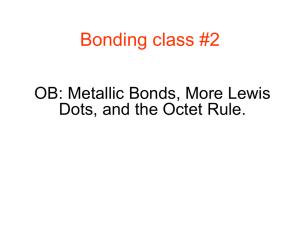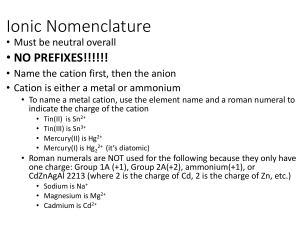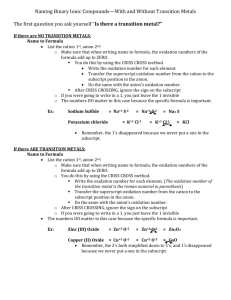ChemTeam: Nomenclature
advertisement
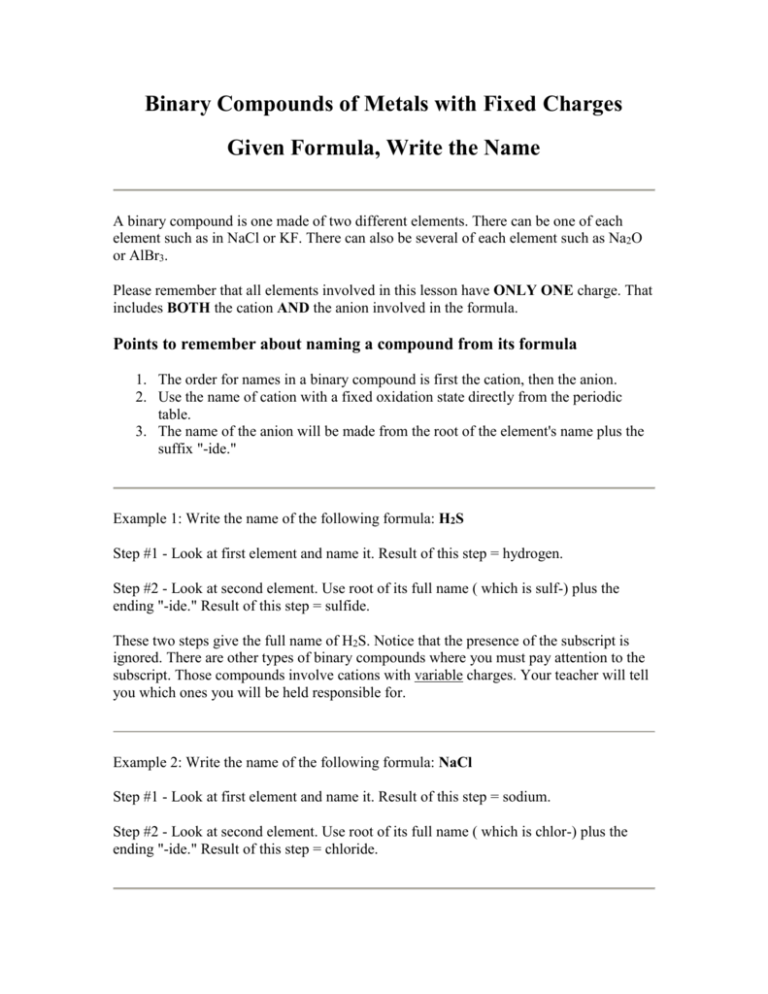
Binary Compounds of Metals with Fixed Charges Given Formula, Write the Name A binary compound is one made of two different elements. There can be one of each element such as in NaCl or KF. There can also be several of each element such as Na2O or AlBr3. Please remember that all elements involved in this lesson have ONLY ONE charge. That includes BOTH the cation AND the anion involved in the formula. Points to remember about naming a compound from its formula 1. The order for names in a binary compound is first the cation, then the anion. 2. Use the name of cation with a fixed oxidation state directly from the periodic table. 3. The name of the anion will be made from the root of the element's name plus the suffix "-ide." Example 1: Write the name of the following formula: H2S Step #1 - Look at first element and name it. Result of this step = hydrogen. Step #2 - Look at second element. Use root of its full name ( which is sulf-) plus the ending "-ide." Result of this step = sulfide. These two steps give the full name of H2S. Notice that the presence of the subscript is ignored. There are other types of binary compounds where you must pay attention to the subscript. Those compounds involve cations with variable charges. Your teacher will tell you which ones you will be held responsible for. Example 2: Write the name of the following formula: NaCl Step #1 - Look at first element and name it. Result of this step = sodium. Step #2 - Look at second element. Use root of its full name ( which is chlor-) plus the ending "-ide." Result of this step = chloride. Example 3: Write the name of the following formula: MgBr2 Step #1 - Look at first element and name it. Result of this step = magnesium. Step #2 - Look at second element. Use root of its full name ( which is brom-) plus the ending "-ide." Result of this step = bromide. Note the presence of the subscript does not play a role in this name. Example 4: Write the name of the following formula: KCl The first part of the name comes from the first element symbol: potassium. The second part of the name comes from the root of the second symbol plus '-ide,' therefore chlor + ide = chloride. This compound is named potassium chloride Example 5: Write the name of the following formula: Na2S First symbol is Na, so the first part of the name is sodium. (Note the presence of the subscript does not play a role in this name.) Second element is sulfur (from the symbol S), so the name is sulf + ide = sulfide. This compound is named sodium sulfide. Three possible mistakes to be aware of: 1) Often students forget to use the suffix "-ide." For example, BaS is named "barium sulfide." An unaware student might want to name it "barium sulfur." 2) Make sure that the second name is the root plus "-ide." An unaware student might want to name BaS as "barium sulfuride." NaBr is not named sodium bromineide, the corect answer is sodium bromide. 3) There is a set of binary compounds which are named using Roman numerals. Students often confuse the two sets of rules. For example, a student might want to name Na2S as sodium (I) sulfide. While it is never wrong to use the Roman numerals, your teacher will probably want you to only use Roman numerals on certain cations. Here are examples of common roots: Cl: chlorF: fluorBr: bromO: oxI: iod- N: nitrPractice Problems Write the correct name for: 1) MgS 2) KBr 3) Ba3N2 4) Al2O3 5) NaI 6) SrF2 7) Li2S 8) RaCl2 9) CaO 10) AlP Write the correct name for: 11) K2S 12) LiBr 13) Sr3P2 14) BaCl2 15) NaBr 16) MgF2 17) Na2O 18) SrS 19) BN 20) AlN Write the correct name for: 21) Cs2O 22) RbI 23) MgO 24) CaBr2 25) LiI 26) BeBr2 27) K2O 28) SrI2 29) BF3 30) Al2S3
